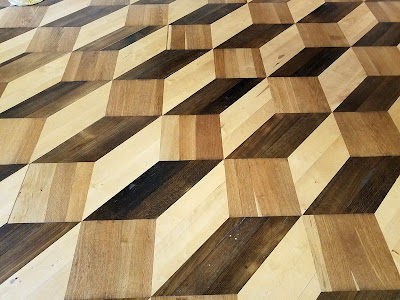Wednesday, September 5, 2018
Another day in St Petersburg, Russia! Today our optional excursion was to Peterhof Palace and Gardens. (We had never paid for optional excursions on the Viking river cruises, but this is our third on the ocean cruise! There are so many optional excursion choices, I can understand why some people are continuing this Bergen to Stockholm trip by staying on the ship for Stockholm to Bergen!)
 |
Kent mails the postcard for Cousin Mary;
we hope she gets it! |
A motor coach ride to the southwest towards Peterhof.
 |
| What is that row of winged things? |
 |
| Oh, light stanchions for the highway below! |
 |
| Storage for all those apartment block renters? |
 |
Light stanchions that make it look like we are driving through
a whale skeleton, on the Western High Speed Diameter toll road |
 |
Petergof Golf Course (for some reason the name of the town
is translated as Petergof, rather than Peterhof) |
 |
Peter & Paul Cathedral (1904) in the area called
Петергоф/Petergof, home of the Peterhof Palace |
It is no longer just Italy that hides its landmarks behind scaffolding due to constant renovations!
We snuck up on the Peterhof Palace from the side and waited in the rain to enter.
 |
View across the Upper Park or Garden of Peterhof Palace toward
some uncovered spires of the Peter & Paul Cathedral (KSS) |
 |
In the palace, we had to wear protective shoe coverings;
we were asked to not skate on the wood floors,
but sometimes they were so polished that they were slippery and
shuffling worked best to maintain balance |
 |
| Main staircase (by Francesco Rastrelli) |
 |
Let me stand on my head to take a photo of the
main staircase ceiling fresco of Tsarina Elizabeth
as an allegory of Spring (by Bartolomeo Tarsia) |
 |
| Ballroom |
 |
Ballroom ceiling fresco, Parnassus (by
Bartolomeo Tarsia), which was the home
of the Muses, and shows Tsarina Elizabeth
as patroness of the arts |
 |
| The infinity mirror effect in the ballroom |
 |
| Ballroom flooring |
 |
Chesme Hall (1779, redesigned by Yuri Velten) with
paintings of 18C Russian naval victories over the Ottomans |
We will see when the designs of Francesco Bartolomeo are retained, that they are Rococo in style, while the redesigns by Yuri Velten are more Classicist.






































No comments:
Post a Comment